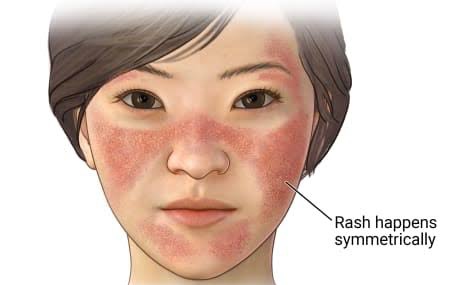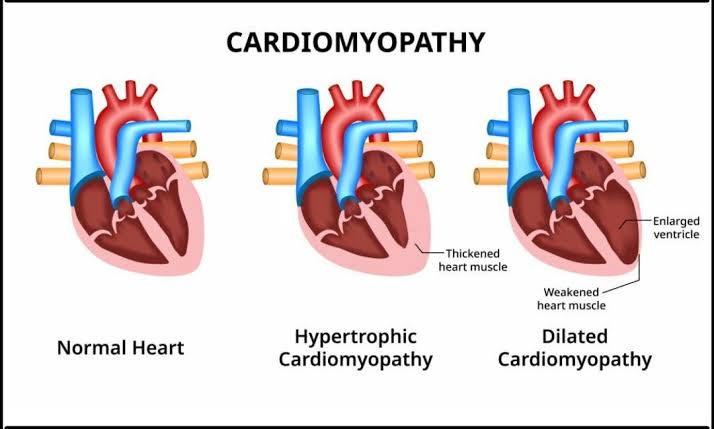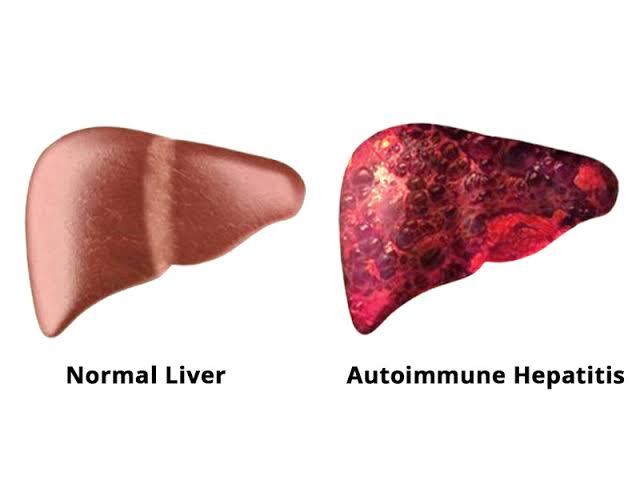
Connective tissue diseases (CTDs) are a group of disorders that primarily affect the connective tissues in the body, which include tendons, ligaments, cartilage, bone, and blood vessels. These diseases can lead to inflammation and damage in various organs and systems. The immune system plays a crucial role in many of these conditions, often mistakenly attacking the body’s own tissues. Among the most notable connective tissue diseases are systemic lupus erythematosus (SLE), scleroderma, and polymyositis.
1. Systemic Lupus Erythematosus (SLE)
SLE is a chronic autoimmune disease characterized by widespread inflammation and tissue damage in various organs. It predominantly affects women of childbearing age but can occur in anyone. The exact cause of SLE is unknown; however, it is believed to involve genetic predisposition, environmental triggers (such as UV light), and hormonal factors.
The clinical manifestations of SLE are diverse and can include:
- Skin rashes: A classic “butterfly” rash across the cheeks and nose.
- Joint pain: Arthritis affecting multiple joints.
- Kidney involvement: Lupus nephritis can lead to kidney failure if untreated.
- Neurological symptoms: Seizures, psychosis, or cognitive dysfunction.
- Hematological issues: Anemia or thrombocytopenia.
Diagnosis typically involves a combination of clinical evaluation and laboratory tests, including antinuclear antibody (ANA) testing and specific autoantibodies like anti-dsDNA. Treatment focuses on managing symptoms and preventing flares using medications such as nonsteroidal anti-inflammatory drugs (NSAIDs), corticosteroids, and immunosuppressants.
2. Scleroderma
Scleroderma, also known as systemic sclerosis, is another autoimmune disorder characterized by the hardening and tightening of the skin and connective tissues. It results from an overproduction of collagen leading to fibrosis. Scleroderma can be localized or systemic; the latter affects internal organs such as the lungs, heart, kidneys, and gastrointestinal tract.
There are two main types:
- Limited scleroderma: Often associated with Raynaud’s phenomenon (reduced blood flow to fingers/toes) and has a better prognosis.
- Diffuse scleroderma: Rapid progression with widespread skin involvement early on; it carries a higher risk for severe organ complications.
Symptoms may include:
- Thickened skin
- Swelling in hands or feet
- Digestive issues
- Shortness of breath due to lung involvement
Diagnosis is based on clinical findings along with serological tests for specific autoantibodies like anti-Scl-70 or anticentromere antibodies. Treatment strategies focus on symptom management and may involve immunosuppressants for severe cases.
3. Polymyositis
Polymyositis is an inflammatory myopathy characterized by muscle weakness affecting proximal muscles—those closest to the trunk—such as shoulders and hips. It primarily affects adults but can occur at any age. The etiology remains unclear but may involve autoimmune mechanisms triggered by environmental factors or infections.
Key features include:
- Progressive muscle weakness
- Muscle pain or tenderness
- Difficulty swallowing (dysphagia)
Diagnosis involves clinical assessment supported by laboratory tests showing elevated muscle enzymes (like creatine kinase), electromyography (EMG), and muscle biopsy revealing inflammatory changes.
Treatment typically includes corticosteroids to reduce inflammation followed by other immunosuppressive agents if necessary.
In summary, connective tissue diseases encompass a range of disorders that significantly impact quality of life through their systemic effects on various bodily functions. Understanding these conditions aids in timely diagnosis and effective management strategies.
Clinical Features of Connective Tissue Diseases
Below are some common clinical features categorized by affected systems.
1. Musculoskeletal System
- Joint Pain and Stiffness: Many connective tissue diseases, such as rheumatoid arthritis and lupus, commonly cause joint pain, swelling, and stiffness. This can lead to decreased mobility and function.
- Muscle Weakness: Patients may experience weakness in their muscles, which can impact daily activities and overall strength.
2. Skin Manifestations
- Rashes: Conditions like lupus often present with distinctive rashes, such as a butterfly-shaped rash across the cheeks and nose.
- Skin Changes: Some disorders, like Ehlers-Danlos syndrome (EDS), can lead to hyperelastic skin or easy bruising due to fragile blood vessels.
3. Cardiovascular System
- Heart Complications: Connective tissue diseases can affect heart function, leading to conditions such as pericarditis (inflammation of the heart lining) or valvular heart disease.
- Blood Vessel Involvement: Inflammation of blood vessels (vasculitis) can occur, resulting in changes in blood pressure or even organ ischemia due to reduced blood flow.
4. Respiratory System
- Pulmonary Issues: Many connective tissue diseases can affect lung function, causing symptoms such as shortness of breath, cough (sometimes with bloody phlegm), or chest pain due to pleuritis (inflammation of the lung lining).
5. Gastrointestinal System
- Digestive Problems: Some patients may experience gastrointestinal symptoms such as difficulty swallowing, abdominal pain, or diarrhea due to inflammation affecting the digestive tract.
6. Neurological Symptoms
- Nerve Involvement: Certain connective tissue diseases can lead to neurological symptoms including peripheral neuropathy (numbness or tingling in extremities) or central nervous system involvement leading to headaches or cognitive changes.
7. Ocular Symptoms
- Eye Problems: Conditions like Sjögren’s syndrome can cause dry eyes and mouth due to autoimmune attacks on glands; other disorders may lead to vision problems related to structural changes in connective tissues around the eyes.
8. General/Systemic Symptoms
- Fatigue: A common symptom across many connective tissue diseases is chronic fatigue that does not improve with rest.
- Fever and Weight Loss: Unexplained fevers and weight loss may also be present during flare-ups of autoimmune conditions.
In summary, the clinical features of connective tissue diseases are diverse and can affect multiple organ systems simultaneously. The specific symptoms experienced will depend on the particular disorder involved but often include musculoskeletal pain, skin changes, cardiovascular issues, respiratory difficulties, gastrointestinal disturbances, neurological symptoms, ocular problems, and systemic manifestations like fatigue.
Diagnostic Methods for Diagnosing Connective Tissue Diseases with Emphasis on Serological Profiles
The diagnosis of these diseases often involves a combination of clinical evaluation, imaging studies, and laboratory tests, particularly serological profiles.
Clinical Evaluation
The initial step in diagnosing CTDs is a thorough clinical evaluation. This includes taking a detailed medical history and performing a physical examination to identify symptoms such as joint pain, skin rashes, fatigue, and organ involvement. However, definitive diagnosis often relies heavily on laboratory tests.
Serological Testing Overview
Serological testing involves analyzing blood samples to detect specific antibodies or other markers that indicate autoimmune activity or inflammation associated with connective tissue diseases. These tests can help differentiate between various CTDs and assess disease activity.
Key Serological Tests for CTDs
- Antinuclear Antibody (ANA) Test
- The ANA test is one of the most common initial screening tests for autoimmune diseases. A positive ANA test indicates the presence of autoantibodies that target components within the nucleus of cells.
- While a positive result can be seen in various conditions (not exclusively CTDs), it is particularly relevant in diagnosing SLE and other autoimmune disorders.
- Specific Autoantibody Tests
- Following an ANA-positive result, specific autoantibody tests may be conducted to pinpoint particular connective tissue diseases:
- Anti-double-stranded DNA (anti-dsDNA): Highly specific for SLE; elevated levels correlate with disease activity.
- Anti-Smith (anti-Sm): Also specific for SLE but less sensitive than anti-dsDNA.
- Anti-Ro/SS-A and Anti-La/SS-B: Associated with Sjögren’s syndrome and can also appear in SLE.
- Anti-Scl-70 (anti-topoisomerase I): Specific for scleroderma.
- Rheumatoid Factor (RF): Often present in rheumatoid arthritis but can also appear in other conditions.
- Anti-citrullinated protein antibodies (ACPA): Highly specific for rheumatoid arthritis.
- Following an ANA-positive result, specific autoantibody tests may be conducted to pinpoint particular connective tissue diseases:
- Complement Levels
- Complement proteins are part of the immune system that helps clear pathogens from an organism. In many CTDs like SLE, complement levels may be decreased due to consumption during immune complex formation.
- Measuring complement components C3 and C4 can provide insight into disease activity.
- Erythrocyte Sedimentation Rate (ESR) and C-reactive Protein (CRP)
- These are non-specific markers of inflammation that can indicate active disease but do not confirm a specific diagnosis.
- Elevated ESR or CRP levels suggest ongoing inflammation commonly seen in various CTDs.
- Other Specialized Tests
- Depending on clinical suspicion, additional tests may include:
- Myositis-specific autoantibodies: For diagnosing inflammatory myopathies.
- Antiphospholipid antibodies: Important for assessing risk factors related to thrombosis in patients with certain CTDs like antiphospholipid syndrome.
- Depending on clinical suspicion, additional tests may include:
Imaging Studies
While serological profiles are crucial for diagnosis, imaging studies such as X-rays or MRI may be employed to assess joint damage or organ involvement associated with connective tissue diseases.
Conclusion
In summary, diagnosing connective tissue diseases relies heavily on serological profiles that include screening tests like ANA followed by more specific autoantibody testing tailored to suspected conditions. Monitoring complement levels and inflammatory markers further aids in evaluating disease activity and guiding treatment decisions.
Management of Connective Tissue Diseases
1. Diagnosis and Assessment
The management of connective tissue diseases (CTDs) begins with a thorough diagnosis and assessment. This includes:
- Medical History: Gathering information about symptoms, family history, and any previous medical conditions.
- Physical Examination: Checking for signs such as joint swelling, skin changes, or muscle weakness.
- Laboratory Tests: Blood tests to identify specific antibodies associated with CTDs (e.g., ANA, ENA panels).
- Imaging Studies: X-rays, MRIs, or ultrasounds may be used to assess joint damage or inflammation.
2. Pharmacological Treatments
Medications are central to managing CTDs and can vary based on the specific disease and its severity:
- Corticosteroids: Drugs like prednisone help reduce inflammation and suppress the immune response.
- Nonsteroidal Anti-inflammatory Drugs (NSAIDs): Medications such as ibuprofen or naproxen relieve pain and inflammation.
- Disease-Modifying Antirheumatic Drugs (DMARDs): Medications like methotrexate or hydroxychloroquine can slow disease progression.
- Biologic Agents: Targeted therapies that modulate the immune system, such as rituximab or abatacept, may be used for more severe cases.
- Immunosuppressants: Drugs like azathioprine or mycophenolate mofetil help control autoimmune activity.
3. Symptom Management
Managing symptoms is crucial for improving quality of life:
- Pain Management: Use of analgesics, physical therapy, and occupational therapy to manage musculoskeletal pain.
- Fatigue Management: Encouraging rest periods and energy conservation techniques.
- Skin Care: For conditions affecting the skin (like lupus), using moisturizers and sun protection is essential.
4. Lifestyle Modifications
Patients are encouraged to make lifestyle changes that can help manage their condition:
- Dietary Changes: A balanced diet rich in anti-inflammatory foods may help reduce symptoms.
- Exercise Regimen: Regular low-impact exercise can improve joint function and overall health.
- Stress Reduction Techniques: Practices such as yoga, meditation, or counseling can alleviate stress-related symptoms.
5. Monitoring and Follow-Up
Regular follow-up appointments are necessary to monitor disease progression and treatment effectiveness:
- Routine Check-ups: Frequent assessments by a rheumatologist to adjust treatment plans as needed.
- Screening for Complications: Monitoring for potential complications related to CTDs, such as lung involvement in scleroderma.
6. Patient Education and Support
Educating patients about their condition is vital for effective self-management:
- Understanding the Disease: Providing information about the nature of CTDs helps patients recognize symptoms early.
- Support Groups: Connecting patients with support groups can provide emotional support and shared experiences.
In summary, managing connective tissue diseases involves a comprehensive approach that includes accurate diagnosis, pharmacological treatment tailored to individual needs, symptom management strategies, lifestyle modifications, regular monitoring, and patient education.







